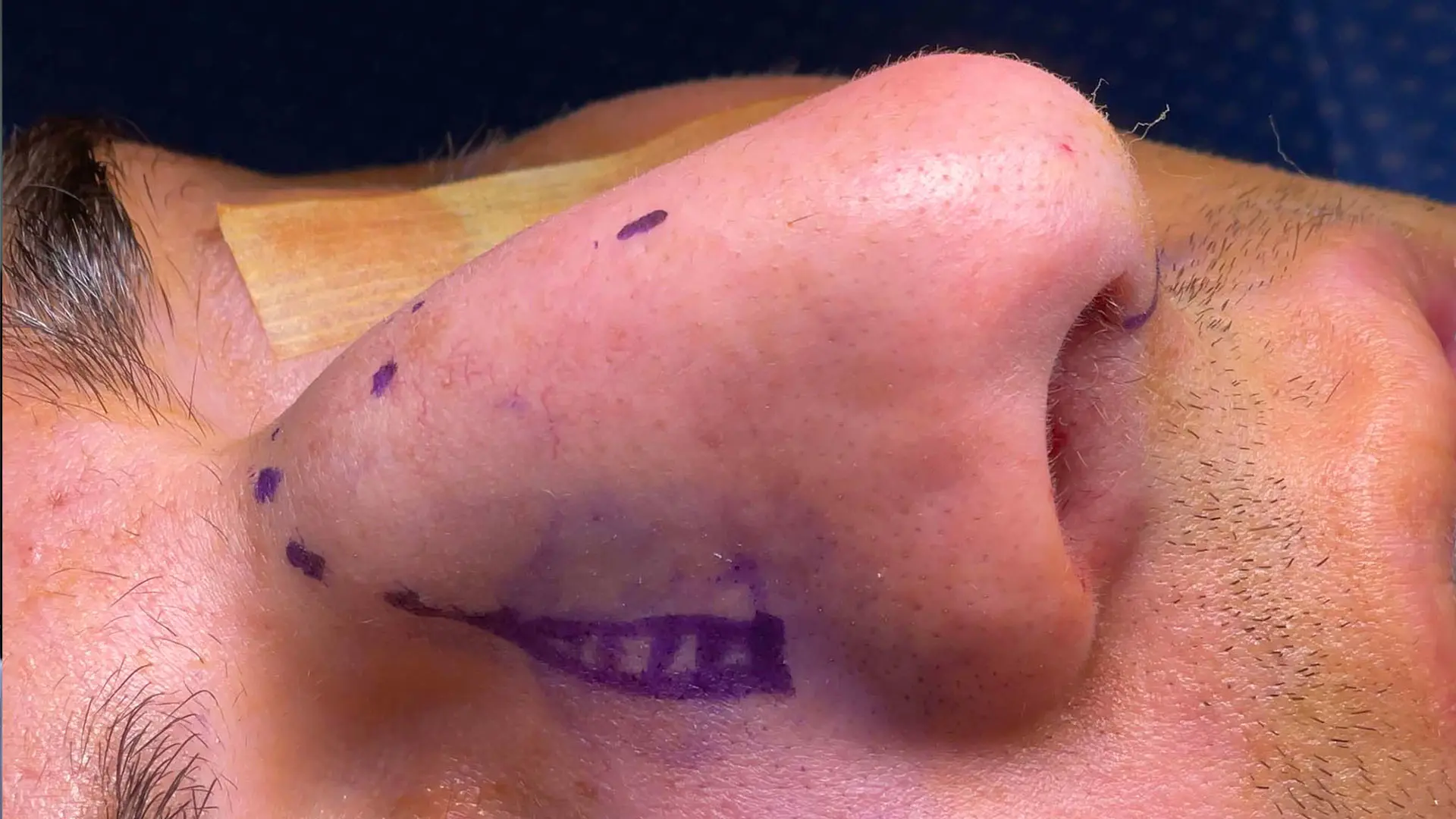Traditionally, facial plastic surgeons at Mount Sinai have followed the standard approach to rhinoplasty—shave down the dorsum, fracture the nasal bones from below, and reset them. It is a procedure that worked well for more than 50 years despite its associated risks and complications. But in 2021, a different technique caught the attention of the Facial Plastic and Reconstructive Surgery team at the Mount Sinai Health System—one that was first described more than 100 years ago and is now regarded as a cutting-edge alternative to the standard approach: dorsal preservation rhinoplasty.
“In the Baltics and in Turkey, it has been popular for quite a while, but for whatever reason, dorsal preservation rhinoplasty fell out of favor with most surgeons,” says Joshua Rosenberg, MD, Chief of the Division of Facial Plastic and Reconstructive Surgery at the Icahn School of Medicine at Mount Sinai. “However, it has made a comeback over the past several years because it represents a potential improvement over the standard way of doing rhinoplasty.”
Why the Technique Is Beneficial
From Dr. Rosenberg’s perspective, there are several factors that account for the potential improvements. For one, the technique limits disruption of key nasal valve regions, ostensibly reducing the risk of post-procedure breathing issues associated with traditional rhinoplasty. The technique also preserves patients’ natural dorsal aesthetic lines while still allowing surgeons to precisely contour the nasal bridge. There is also a significant difference in the postoperative structural stability after dorsal preservation rhinoplasty compared with traditional hump reduction techniques.
“The bones are in a solid position when patients leave the operating room,” Dr. Rosenberg says. “The likelihood that they will disrupt the work we have done by accidentally sleeping on their face or wearing glasses in the first few weeks after surgery appears significantly smaller.”
How Dorsal Preservation Rhinoplasty Is Performed
Although there are several different methods for performing dorsal preservation rhinoplasty, Dr. Rosenberg prefers the subdorsal strip technique. After exposing the framework of the nose back to the bony septum, Dr. Rosenberg makes an incision approximately three to five millimeters below the dorsum followed by several lateral and transverse osteotomies around the nasal bones. This enables the entire framework of the nose to drop down and the height of the dorsum to be reset. Once that is done, Dr. Rosenberg addresses any irregularities in the cartilage or bone through rasping and then completes the procedure by refining the nasal tip.

A nose marked for dorsal preservation rhinoplasty.
Typically, Dr. Rosenberg favors a closed approach for the procedure, creating the osteotomies inside the nose. However, in cases involving a broken nose, a significantly deviated septum, or significant asymmetries in the nasal tip, Dr. Rosenberg adopts an open approach, starting with a small incision at the base of the nose before exposing the framework and creating the osteotomies.
“The learning curve for this procedure is not particularly significant, which is advantageous,” Dr. Rosenberg says. “Once you are comfortable with it, it can be done relatively quickly—usually within two to two-and-a-half hours—because it eliminates the time and effort needed to refine irregularities in the bridge of the nose. It also is effective in straightening crooked noses, which is notoriously hard to do, because we are able to shift the bone in place by making a few asymmetric bone cuts.”
Reducing Challenges and Risks
Despite those advantages, Dr. Rosenberg says the technique does pose challenges. For example, it can be difficult to achieve the desired height reduction among patients who present with a large dorsum. But a more pressing concern is the potential risk of fracturing the skull base during the procedure, given its proximity to the bony septum, which could lead to life-altering complications for the patient, such as loss of smell.
“That is the one aspect that scares surgeons away from trying this approach,” Dr. Rosenberg says. “At Mount Sinai, we employ a number of techniques to avoid skull base damage, including the use of piezoelectric instrumentation.”
Having completed approximately 100 dorsal preservation rhinoplasties with a high rate of patient satisfaction, Dr. Rosenberg is interested in refining the technique further. His overarching goal is to create a highly reproducible rhinoplasty technique that delivers desired results with a high degree of certainty. Optimally, he envisions an approach that reduces the worldwide revision rhinoplasty rate to less than 5 percent, perhaps even less than 1 percent.
“Is it possible to simplify the procedure to the point where that goal is achievable? It is hard to say,” Dr. Rosenberg says. “However, we will continue perfecting dorsal preservation rhinoplasty to lower the risk profile and the overall revision rate for surgery to the fullest extent possible.”
Featured

Joshua Rosenberg, MD
Chief of the Division of Facial Plastic and Reconstructive Surgery